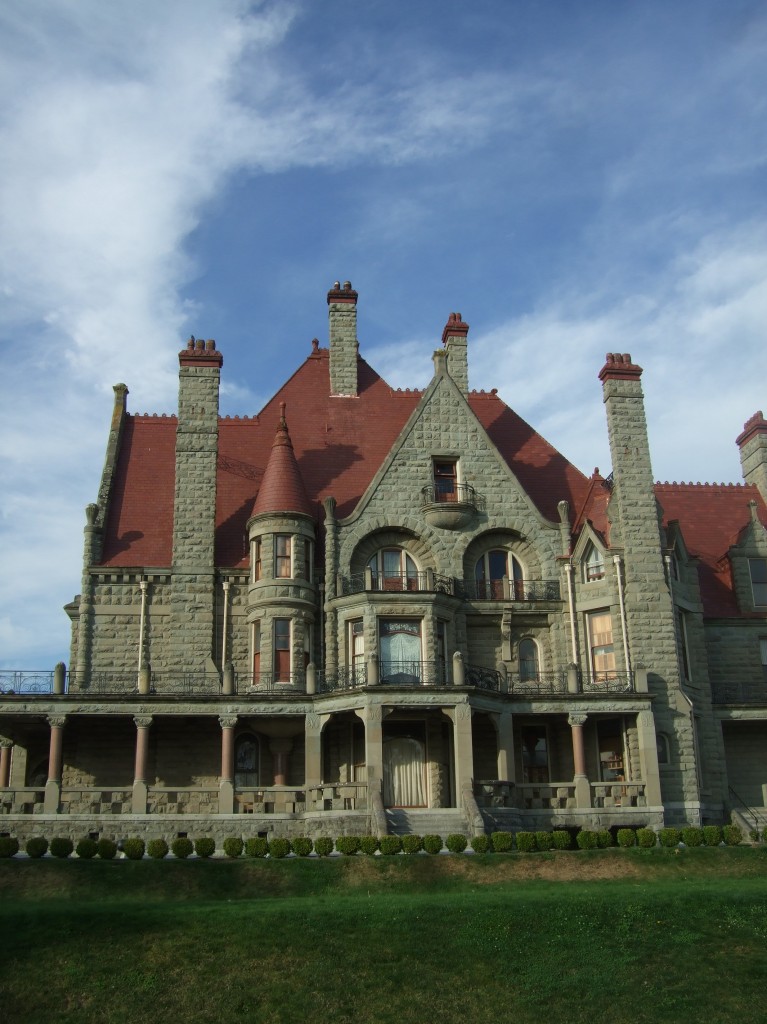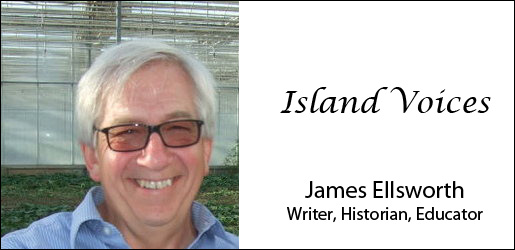Victoria B.C. Castle Points To Rich Heritage & Local History
Archive ∙ Back to Island Voices
The provincial capital is home to the only self-funded museum & castle which promotes tourism and history in equal measure, focusing on the Dunsmuir Family.
Within the wood-paneled walls of Victoria’s bonanza castle known as Craigdorroch (pronounced CRAIG DARE awk)) there exists a century’s microcosm of local history. It is called bonanza because it was built from the enormous wealth of 19th century industrialists. However, unlike Percy Shelley’s Ozymandias, this is no “colossal wreck, boundless and bare” for Craigdarroch displays the passage of time and events in a thoughtful and personal way. Within its four stories, the visitor comes to sense the soap opera of the original “robber baron” Dunsmuirs, empathize with the depression and rehabilitation of war victims, and hear the piano études of music students. Visitors can be virtual flies on walls.

The Dunsmuir’s Castle
Craigdarroch, Gaelic for rocky, oak place, presents its history in a thoughtful and personal way. The castle sits on a rocky outcrop surrounded by garry oak. In fact, wood from around the world adorns the building- Spanish mahogany, Hawaiian koa, and Oregon red cedar. Over 100,000 visitors walk through its halls and grounds every year and they observe a veritable global edifice. It took three years to build, 1897-1890 and in that time
- five rail cars from Chicago brought pre-fabricated pieces like stairways, door and window frames, and over 2,000 panels
- thirty-three original stained and lead glass Victorian windows
- red roof slate from New England
- a revival 12th century Romanesque style of arches and conical towers
But how did the Dunsmuir family come to put its stamp on Victoria?
A Dysfunctional Family Feud
Professor of economics at Loyala University, Thomas DiLorenzo (Mises Institute, Sept. 23, 2006) says that among 19th century industrialists, there were bona fide market entrepreneurs and there were government subsidy-manipulating political entrepreneurs who rightly earned the sobriquet of robber baron. Robert Dunsmuir fell into both categories.
A Scottish immigrant with coal-mining experience, he translated jobs beginning in 1851 with the Hudson’s Bay Company and contacts with the Royal Navy at Esquimalt so that by 1883 his colliery operations were the largest and most profitable in British Columbia. He had enough wealth and security to make any acquisition he wanted. But he also negotiated a lucrative railway contract in which the government gave him $750,000 subsidy and land rights worth 20% of Vancouver Island. He was also a viciously independent owner who broke labour using low wages, hiring Chinese labourers for less, and using the military and police to break strikes. Surely some workers would have seen karma at play in the Dunsmuir legacy.
Robert put his efforts into building the castle Craigdarroch but he didn’t live to see it completed, dying in April, 1889. Then the eldest daughter died of typhoid in 1890. Although his two sons, James and Alex who were running the businesses, believed their father’s oral promise to inherit, everything went to their mother, Joan. She occupied the house with her daughters and two orphaned grandchildren. Alex died in 1900 and James wrangled with his mother in a lawsuit that went to the highest court. One headline read, while James was premier of the province (1900-1902) that he was sued by his mother. That could not be good for a political career. James did not speak to his mother for years and when she died in 1908, he begrudgeingly attended the funeral as Lieutenant-Governor (1906-1909) and reportedly sobbed. Joan left the castle and contents to her daughters and grandchildren equally, but not her son. Finally the estate was auctioned, won in a lottery, used as collateral to pay debts and became a public building in 1919. The federal government had bought it.
The family feuds and occupation is wonderfully exhibited by pictures, articles and personalized audio tapes, such as Henrietta speaking in the drawing room.
Permutations Of A Historical Building
The federal government bought Craigdarroch in 1919. The First World War had just ended and the estate was converted to a military hospital and occupational training for veterans deemed ‘incurable, suffering paralysis with spinal injuries. The hospital closed in 1921 and the next phase of castle use was distinctly educational.
- 1921-1946, Victoria College operated in converted classrooms and had students such as native artist, Bill Reid; historian and broadcaster, Pierre Berton, and Frances O. Kelsey who helped block the distribution of the drug thalidomide
- 1946-1968, the Victoria School Board offices used the premises
- 1968-1979, the Victoria Conservatory of Music was the occupant
In 1979 the Castle Society undertook renovations to return the residence to the Joan Dunsmuir period but also keep artifacts and primary document excerpts in sample rooms of other occupants. In 1994 the city of Victoria sold the castle and grounds to the Society now called the Craigdarroch Castle Historical Museum Society.
The Society continues to be diligent in procuring artifacts, like the 1895 gold-meshed handbag of Laura, James’ wife and the ornate gilded and onyx seal of James himself. Its 120 volunteers & docents and staff of 14 work to make the estate come alive with displays of historical significance.
The Dunsmuirs built other castles too; Hatley Castle has become the underpinning of Royal Roads University and left their name on streets. But Craigdarroch is perhaps the best example of a community benefitting from private wealth through governments and a non-profit organization intent on maintaining a historical resource.


